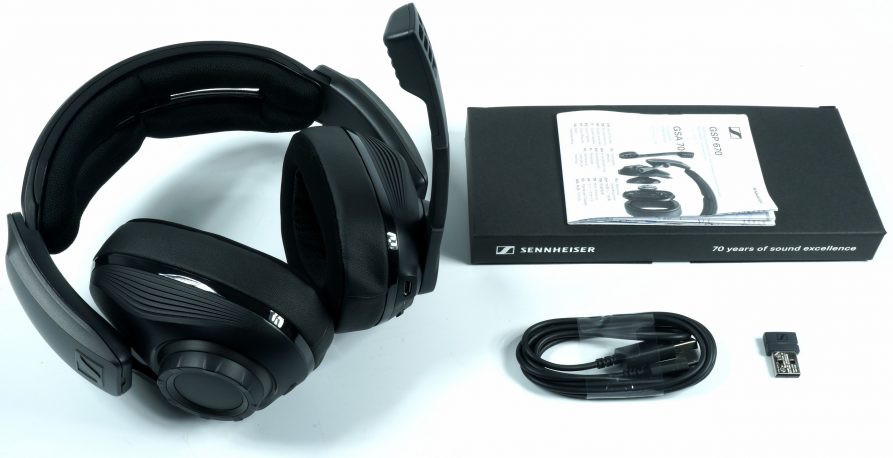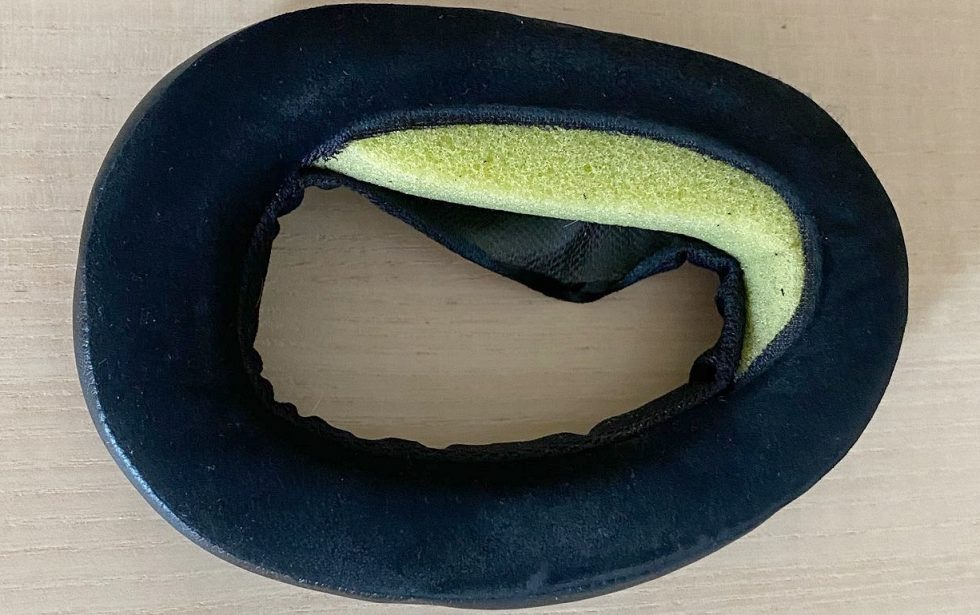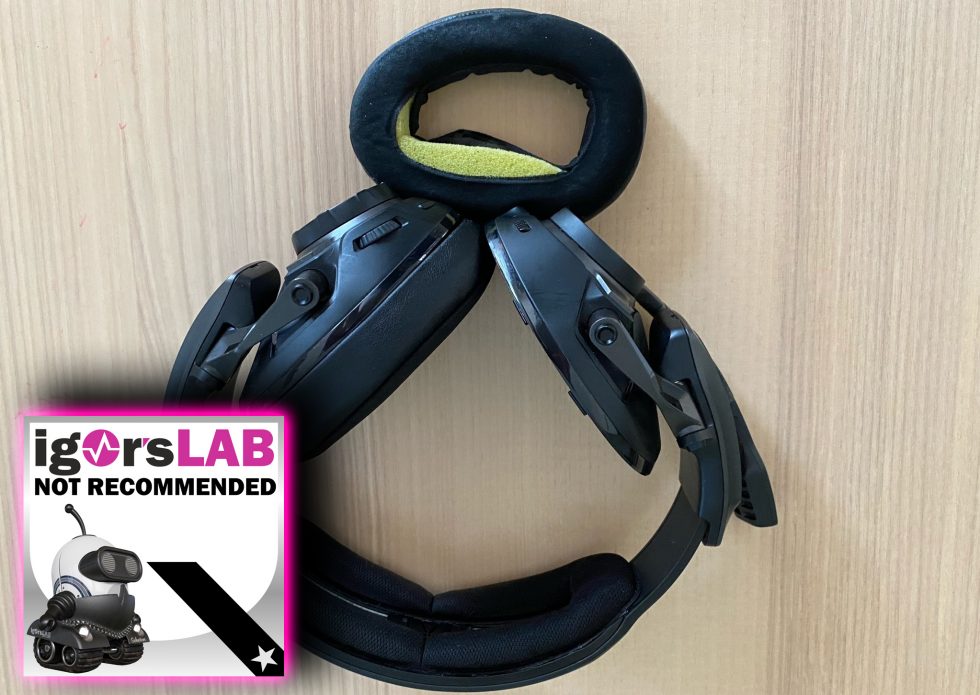And once again, the Pad Man has to take action to report problems. This time, however, not via heat conduction pads, but via ear pads. Let’s remember, I had put the GSP 670 through its paces in June 2019, about 2 years ago, or so I thought. At that time, I also tested the headset with a clear conscience, took it apart and analyzed the installed technology. The fact that the street price has leveled off 100 euros lower in the meantime is certainly normal. The extreme margin of error due to a cent component, however, does not.
Read the product review here: Sennheiser GSP 670 Wireless Gaming Headset in test – how good is the 350 Euro top model really?

Sennheiser and Epos – it’s not always what it says on the inside
Actually, the GSP 670 was never a real Sennheiser product, which I knew at the time, but as long as the quality is right, it doesn’t really matter. The joint venture company Sennheiser Communications A/S , founded in 2003, was responsible for the production, sales and support at that time. Sennheiser and William Demant Holding A/S had joined forces to produce the corresponding products. However, Sennheiser Communications A/S has been history since this year, and the reasons for this are probably to be found in the quality standards that Sennheiser has set very high for years, and where in the meantime one can certainly see a dilution of the brand image.
The affected Enterprise Solutions and Gaming Headsets businesses will continue as an independent business under the Epos brand within the William Demant Group. Epos will now manufacture and continue to distribute the Sennheiser Communications portfolio for enterprise and gaming under the Epos/Sennheiser brand name. In addition, a separate brand portfolio is to be introduced, because in two years the rights to use the Sennheiser brand name will also cease to apply and everything will then be marketed solely under Epos.
Predetermined breaking point due to inferior pads
A pad can break for a variety of reasons, and you’ll certainly want to replace it once in a while for hygienic reasons, even after wearing it for a long time. All this, of course, is not a fuss and is perfectly normal. Only the question always arises, what is actually “long”. Our test sample was sporadically (and anything but excessively) used in the editorial office for about 8 months in the home office (after it stood unused in the archive for over a year). And that’s just occasionally on video calls. The resulting hours of use are certainly far below the average use of a gamer in the same period.
That wouldn’t be a real reason to write an article like this either, because it could very well be an isolated incident. Unfortunately, at this point I also have to include the feedback from readers and acquaintances, where there was also increased feedback about defective ear pads after a certain time after the article. This was also communicated to Sennheiser at the time and they promised an uncomplicated exchange and replacement, but didn’t see themselves at fault because it wasn’t subject to Sennheiser’s quality control.
Interestingly, both ear pads never broke to the same extent, because it was either the left or the right pad. A check revealed that the supposed seams between the rather inferior imitation leather and the extremely thin fleece used were not seams at all. This is not surprising, because normally such materials are joined together by high-frequency welding. If you do it right and the amperage, pressure, welding time and cooling time are correct, then it can last.
In the case of the GSP 670’s pads, however, not only were very thin and thus hardly durable materials used, but there was also sloppiness in the welding. Here the connection has simply loosened, which could indicate too short a welding time and possibly also too short a cooling time. The conclusion would then be a clock line trimmed for maximum speed. So cost down and not appropriate for a product with an MSRP of 350 euros.
It is also interesting that Epos cannot be reached by German press representatives. One does not find a telephone number of the press office on the homepage, if one writes an email to the blanket address indicated for Germany, one gets an automated reply of a hidden forwarding to the individual account of an employee, which, however, no longer exists. And there you are asked to take the correct address from the web page. The classic loop to nowhere, unfortunately.
The number of the normal customer support can be found after a longer search, but the handling is not as customer-friendly and uncomplicated as at Sennheiser, even if the colleague at the hotline made an effort. They are, unlike Sennheiser’s online store and support all just agents with no discretion or decision making power of their own. One would have to ask first. Unfortunately, the shipping of a pad that has to be paid for is associated with shipping costs and is quite obviously not made from Germany either.
Conclusion and decision
I can only apologize to the affected readers and buyers, because it was not in the power of the tester to uncover such a mistake during the one-week test. Nevertheless, I will draw my conclusions and consequences from the current situation. Of course I withdraw the award and the purchase tip as well. You simply cannot and should not offer such cheaply manufactured and poorly processed components in this price range. Here, instead, you clearly have to issue a purchase warning, as hard as it is. Should Epos still get in touch, I will of course bring you an update.




































